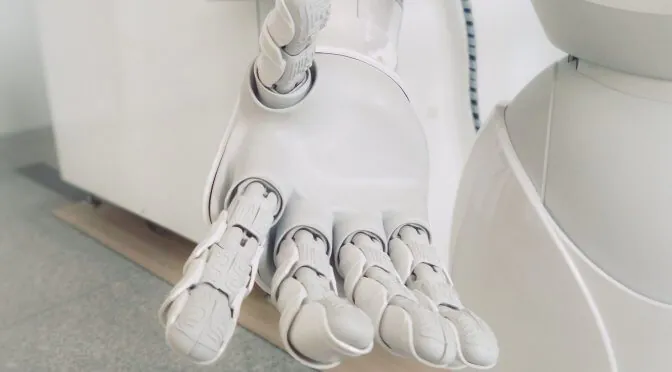Soft Robotics has been developing many diverse and flexible technologies in recent years. When creating and using robots, we’re generally trying to achieve things that humans (and other creatures) can’t do on their own, or to find ways of doing those things more efficiently. However, scientists are learning that there are many things organic beings do very well, and we can draw on those things to make robots more capable and more resilient. Soft robotics is a field dedicated not only to learning from nature, but also to discovering new ways of incorporating those learnings, often by mimicking the materials and properties of living things rather than relying on the more rigid structures of traditional robotics. Scientists around the world are making many interesting innovations that could improve robotics immensely in the coming years.
Robot, heal thyself
Roboticists from the University of Tokyo have created a self-healing metal tendon fuse as part of a prototype robot leg. The fuse can repair fractures by melting itself and then re-forming. The two halves of the module contain an alloy with a low melting point of 122 degrees Fahrenheit. When the fuse breaks, the two halves heat enough to melt the alloy and attach them back together again. While the resulting joint is not as strong as the original, the scientists have so far managed to achieve a re-formed module that has 90% of its original strength, and this number could be improved further over time.
By enhancing the ability of robots to fix themselves, we can extend their lifespan when they’re working in remote areas where it is difficult for humans to access and maintain them. It can also cut down on the time and resources needed to repair a robot, which down the road could benefit both scientists and general consumers.
Programmable organisms
Across the Pacific, researchers from Tufts University, the University of Vermont, and the Wyss Institute at Harvard have created tiny living robots made from frog stem cells. The scientists used heart cells for their ability to expand and contract, helping the organism to move, and skin cells to provide structure. The resulting organism is only one millimeter in size and can be programmed to move and push things around.
There are several possible applications for this type of robot, which the researchers have dubbed a “xenobot.” It could be used to deliver drugs inside a person’s body, or to help clean up the environment by digesting toxic materials. They can also be used to create more environmentally friendly technologies that will break down once they’re no longer in use.
There are a few concerns that come along with the xenobots, however. Some people object to the use of stem cells in general, and there are potential ethical concerns with creating living robotics and whether they should have similar protections to animals or humans. It will require more development and consideration, but this technology could make big contributions to the field of robotics.
Suggested reading: Top 21 Industrial Robotics Companies in the World 2019
A new robot takes flight
Robotics engineers at Perdue have taken inspiration from the hummingbird to create a new flying robot. The robot’s design is more agile than current drones, able to start and stop more quickly. Hummingbirds also inspired the robot’s programming – the robot was trained on an algorithm based on hummingbird techniques from around the world, teaching it how and when to fly. It can navigate by touching surfaces, rather than by sight, creating a map of its surroundings. This helps the robot stay lightweight by eliminating the need for a visual sensor. The robot is smaller than its live hummingbird counterparts and weighs about the same, with a 3D-printed body of carbon fiber. It only needs 2 motors, but currently has no power source and is therefore restricted by a power cord. A future goal for the project is removing this limitation to allow for unrestricted flight.
Breaking a sweat
Sweat might not be the first thing you’d expect to come from soft robotics research, but that’s what a team from Cornell University, Italy’s Center for Micro-BioRobotics, and Facebook Reality Labs is working on. These researchers have developed a hand that sweats in order to cool itself down, leaking water when its temperature reaches a certain level. The technology faces drawbacks such as running out of water or becoming too slippery to grip properly, but would allow robots to better regulate their temperature when in extreme environments. This would be an advantage over more complex and bulky cooling systems.
Suggested reading: The Future of Robotics in Japan: Are Robots Ready to Replace Humans?
Getting a grip
A graduate student from Simon Fraser University has designed robotic fingers capable of matching the strength and care of a human’s grip, allowing for more natural behaviour that is less likely to damage objects or people. Traditionally most robots are made using hard materials, and often soft robotics uses materials that don’t have enough strength to stand up to human interaction and everyday use. These 3D-printed fingers take the best of both worlds: good grip strength and soft materials. They also use sensors to detect pressure and strain. The technology could be extremely useful for prosthetics and robot hands.
These are only a handful of the recent innovations in the field of soft robotics. Teams around the world are developing new and unique ways to bring qualities and abilities into the robotics market in order to create stronger, more durable, and more flexible robots. Learn about other robotics market trends and challenges, along with key industry players, statistics, and more with Technavio’s market research report.



